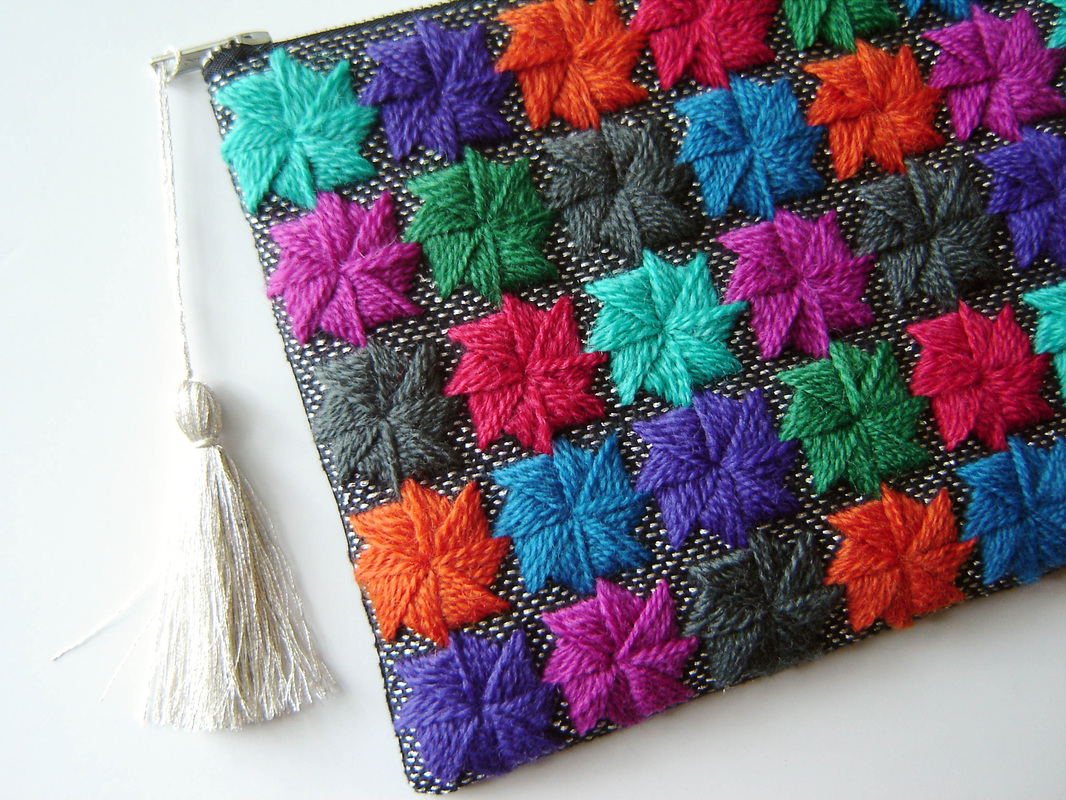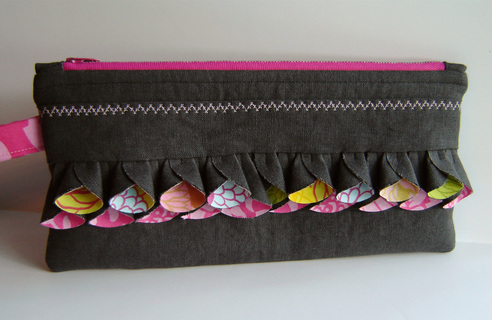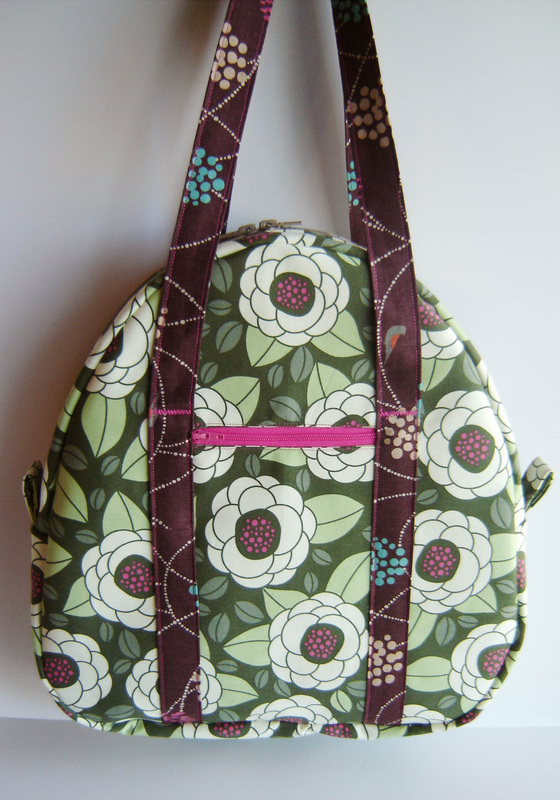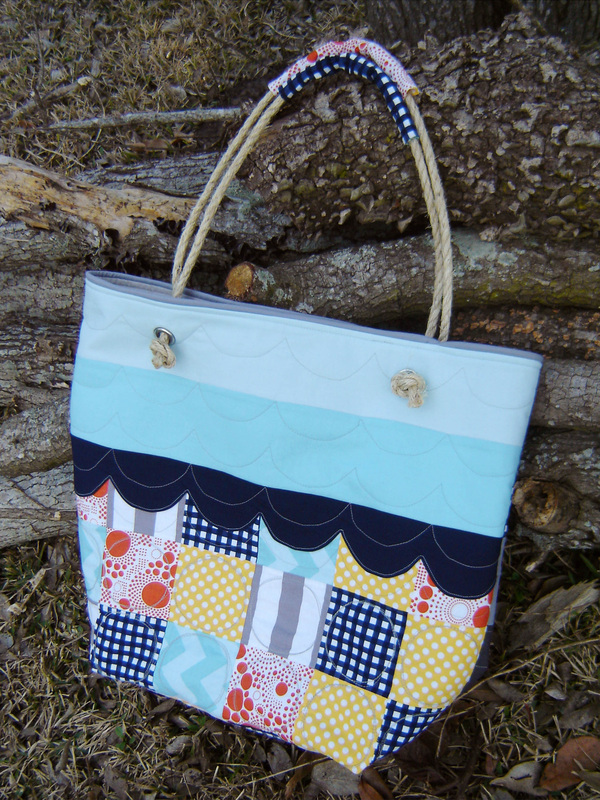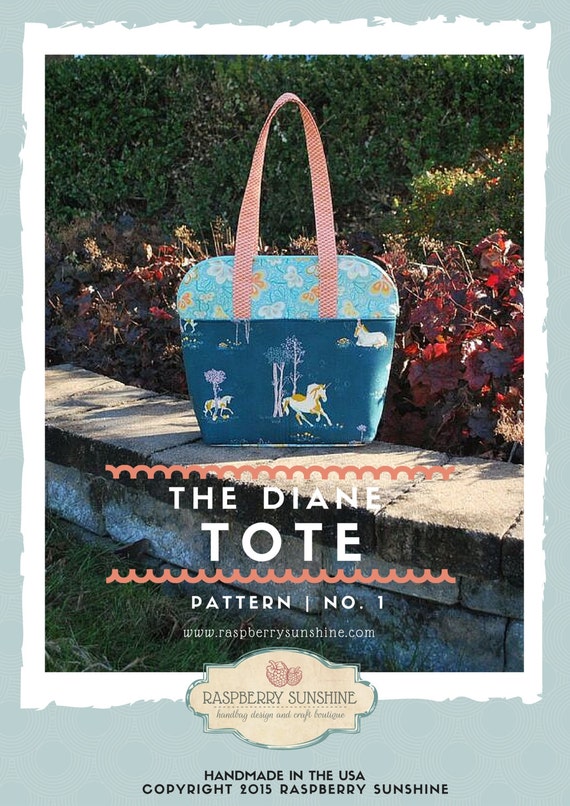Jenny makes the most incredible bags, and many of the Swoon Patterns feature her bags on the cover. She does a fabulous job mixing fabrics with vinyl and other design elements to create stunning and professional looking bags.
If you don't already follow Jenny on Instagram, you are missing out! I always feel inspired to sew whenever I see what gorgeous projects she is working on. If you'd like to order one of her stunning bags, hit her up on Facebook to see what she currently has to sell or to order your own custom bag.
..................................................................................................................................................................
 |
| This is the Blanche Barrel Bag. Pattern by Swoon Sewing Patterns. |
Since sewing with vinyl is always surrounded with so many questions, lets do this in a Q & A format! I posted on Instagram a few days ago asking for questions about vinyl and everybody was so helpful! Now I'll try my best to answer the most important questions to the best of my ability. My way may not be the "right" way, but it is what works for me!
First things first, what is the best vinyl to purchase for sewing bags?
When I'm shopping for vinyl, I usually like to buy it in person so I can see what I'm getting. You want an upholstery vinyl, so it is heavy enough to hold up in bag making, and it doesn't have much, if any, stretch to it. I have a local shop where I buy a lot of my vinyl, unfortunatly they are not online.
 |
| This is the type of flannel backing you are looking for. |
 |
| You DO NOT want this!! The backing seems like a quilt batting and the vinyl feels like thin plastic. |
What sewing machine do you use?
My main squeeze is my Juki DDL-8700. It is an industrial machine and she is a beast! I go through several layers of vinyl on this machine and have no problems at all!!! (Just look at all those layers!)

For years, I sewed all my bags on my Brother PC420. It is an electronic domestic sewing machine. I wouldn't dream of sewing an entire vinyl bag on this machine, but I've made several bags with vinyl accents on this machine with no problems! (Especially if you get the Jo'Ann's vinyl I linked above!)
What needles do I use to sew vinyl?
For my domestic machine, I use Schmetz Size 18 Leather needles.
For my Juki, I use Organ DB X 1 size 16 needles.
Do you use special feet for sewing vinyl?
The foot I would most recommend for sewing vinyl is a Teflon foot. It has a non-stick coating on the bottom that helps it to glide across vinyl easier. There are also roller feet that are useful in this application, however I have not used one before. With my Juki, I use the regular metal feet with no problems with most vinyls. Test the foot you want to use on a scrap of your vinyl to see if it sticks before sewing your bag. If your machine has an adjustable presser foot pressure (say that 5 times fast!) I notice that it is helpful to reduce the pressure on the foot and that helps the vinyl to glide more easily as well.
 |
| These are both Teflon feet (see the white coating on the bottom?) The one on the left is for a domestic machine, and the one of the right is for the Juki. |
What kind of thread do you use?
I just use what my machine likes! With my Brother, I always used Coats and Clark. My Juki loves Gutermann thread! If I know what colors I want, I order Mara 100 from Wawak.com. Most of the time, I just buy Gutermann polyester Sew-All thread from JoAnn's - it is very close to the Mara 100. If I want a nice thick top-stitching thread, I buy the Gutermann's top-stitching thread they sell at JoAnn's.
While we're talking about thread, I use a stitch-length of 5 for top-stitching with the heavy top-stitch thread. If I use the other threads for top-stitching, I use a stitch-length of 4. For seams, I usually use a length of 2.5.
 |
| Left: Gutermann 100% Polyester Top-Stitching thread Center: Gutermann 100% Polyester All Purpose Thread Right: Gutermann 100% Polyester Mara 100 |
You can't pin vinyl (because the holes will be permanent) so what do you use instead?
Wonder Clips and Tanner's Bond Double Stick Tape are my two favorite things when I can't pin!
I use the double stick tape for things like making handles or piping.
Wonder clips are best for holding parts together. Like holding the piping on and holding the ends to the main body. Just pull them off as you sew!
 |
| Not enough time to go into the complete how-to of making vinyl piping in this post, but if you try it, make sure you clip into the seam allowance so it fits nicely around
the curves!
|
Do you interface vinyl and can you iron it?
As far as interfacing vinyl is concerned, sometimes you do and sometimes you don't! I do not add interfacing to handles. As long as you have chosen a quality vinyl, it will be sturdy enough to hold up for your handles. If you think it feels a little thin, then go ahead and add a layer of fusible woven interfacing (Shapeflex SF101). For bag that need to hold their shape, such as the Swoon Blanche that I sewed all in vinyl, you will still want to use the foam interfacing and the stabilizer in the bottom panel. Basically, you will still interface if it is meant to give the bag shape. If the interfacing is only intended to make the fabric a more heavy weight, then you can skip it.
I use wonder-under fusible webbing to adhere my foam to by vinyl or fabric when I'm sewing bags. Never touch the hot iron to the right side of your vinyl, IT WILL MELT!!! I iron the wonder-under to the vinyl from the wrong side. Then I place the foam over the wonder-under, place a pressing cloth over the foam, and iron the foam to the vinyl. I have pressed many different vinyls from the wrong side and haven't melted any yet. Of course, try a scrap of your vinyl first, to make sure it can hold up to the heat.
Wow! That was a lot of information! I only covered the basics here, and tried to answer all the questions I am asked most often. I could go on all day with more specifics, but will have to save that for another time. I hope this is helpful to you and hope that you feel a little more comfortable working with vinyl now!

















